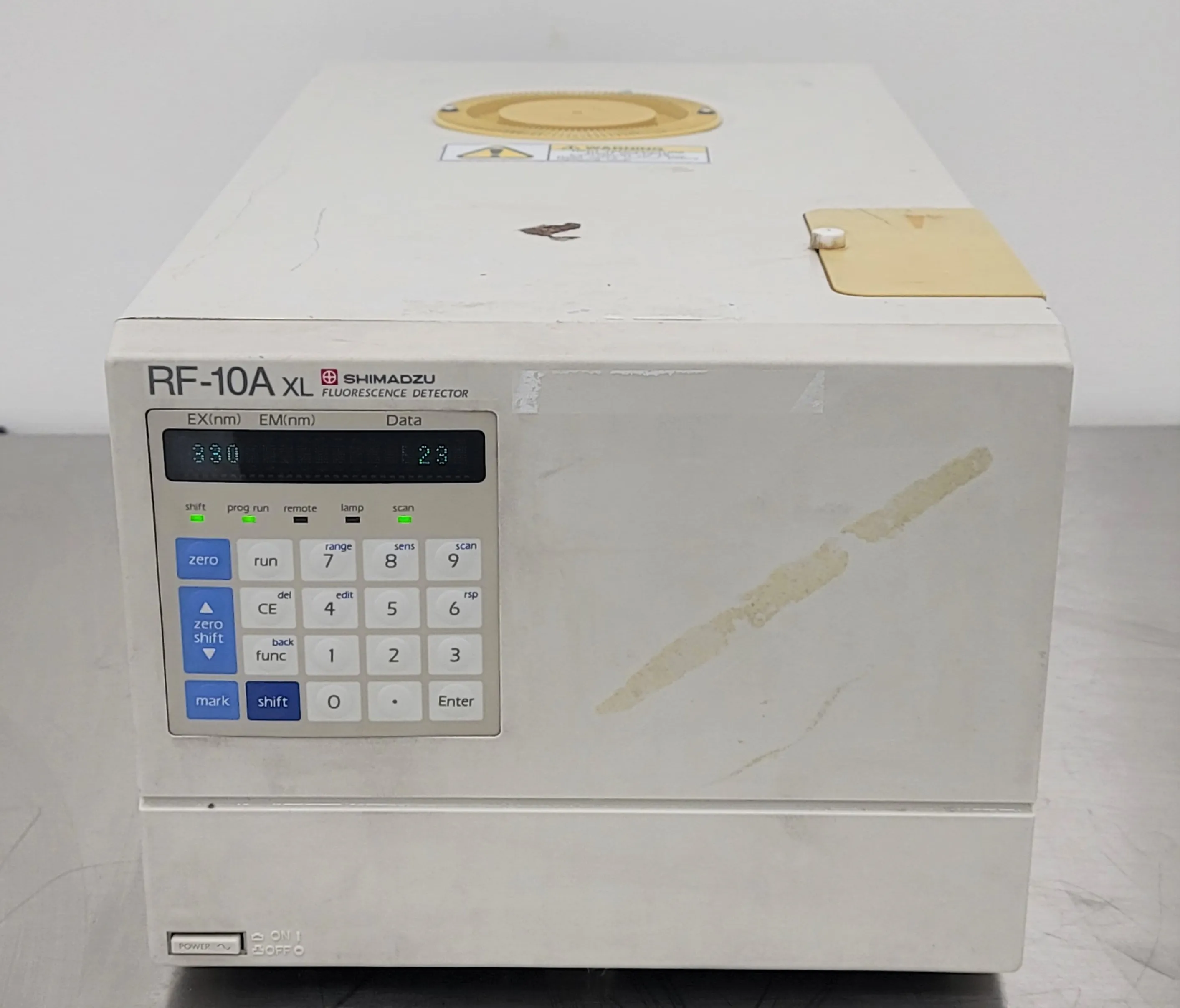Explore our range of Fluorescence Detector designed for high-performance liquid chromatography (HPLC) applications. Our detectors offer superior sensitivity, precise wavelength accuracy, and excellent noise characteristics, ensuring reliable detection of fluorescent compounds in your samples.
Fluorescence Detector
Price Filter
$360.00 - $15,000.00Product Region
Product Condition
Product Warranty
Browse By Category

Shimadzu RF-10AXL Fluorescence Detector CAT 228-35353-92 HPLC FPLC GC CE
Question & Answers For:
Fluorescence Detector
Past Questions, Helpful Answers.
What is a fluorescence detector used for?
A fluorescence detector is primarily used in high-performance liquid chromatography (HPLC) applications to detect and measure fluorescent compounds in samples. It is ideal for analyzing trace-level compounds that naturally fluoresce or are tagged with fluorescent markers.
How does a fluorescence detector work?
A fluorescence detector works by exposing a sample to specific wavelengths of light, causing fluorescent compounds to emit light at different wavelengths. The detector then captures this emitted light, measuring its intensity to determine the concentration of fluorescent compounds in the sample.
What are the benefits of using a fluorescence detector in HPLC?
Fluorescence detectors provide enhanced sensitivity, allowing for the detection of compounds at low concentrations. They also offer high selectivity and low noise, making them suitable for precise, reliable analysis of complex samples.
What kind of compounds can be detected with a fluorescence detector?
Fluorescence detectors are ideal for detecting compounds that either naturally fluoresce or can be made fluorescent through tagging, including various organic compounds, proteins, and pharmaceuticals.
Does this fluorescence detector allow for adjustable wavelength settings?
Yes, most fluorescence detectors used in HPLC applications allow users to adjust excitation and emission wavelengths to target specific compounds, enhancing flexibility and precision in compound detection.
How does the sensitivity of a fluorescence detector compare to other types of detectors?
Fluorescence detectors are generally more sensitive than other types of detectors, such as UV detectors, because they specifically measure compounds that emit fluorescence, resulting in lower detection limits for trace analysis.
Are there specific sample types that are better suited for fluorescence detection?
Fluorescence detection is well-suited for samples containing compounds that fluoresce, such as aromatic hydrocarbons, biochemicals like proteins and amino acids, and fluorescent-labeled substances often used in biomedical research and environmental testing.
Is it possible to detect multiple compounds simultaneously with this detector?
Yes, with optimized wavelength settings, fluorescence detectors can detect multiple fluorescent compounds in a single run, provided that the compounds have distinct fluorescence properties.
What level of maintenance is required for a fluorescence detector?
Fluorescence detectors require regular maintenance, such as lamp replacement and calibration checks, to ensure optimal performance. Maintenance intervals depend on usage and sample types but are typically minimal.
Can this detector be integrated with existing HPLC systems?
Yes, fluorescence detectors are generally designed to be compatible with most standard HPLC systems, allowing for easy integration into existing laboratory setups.
